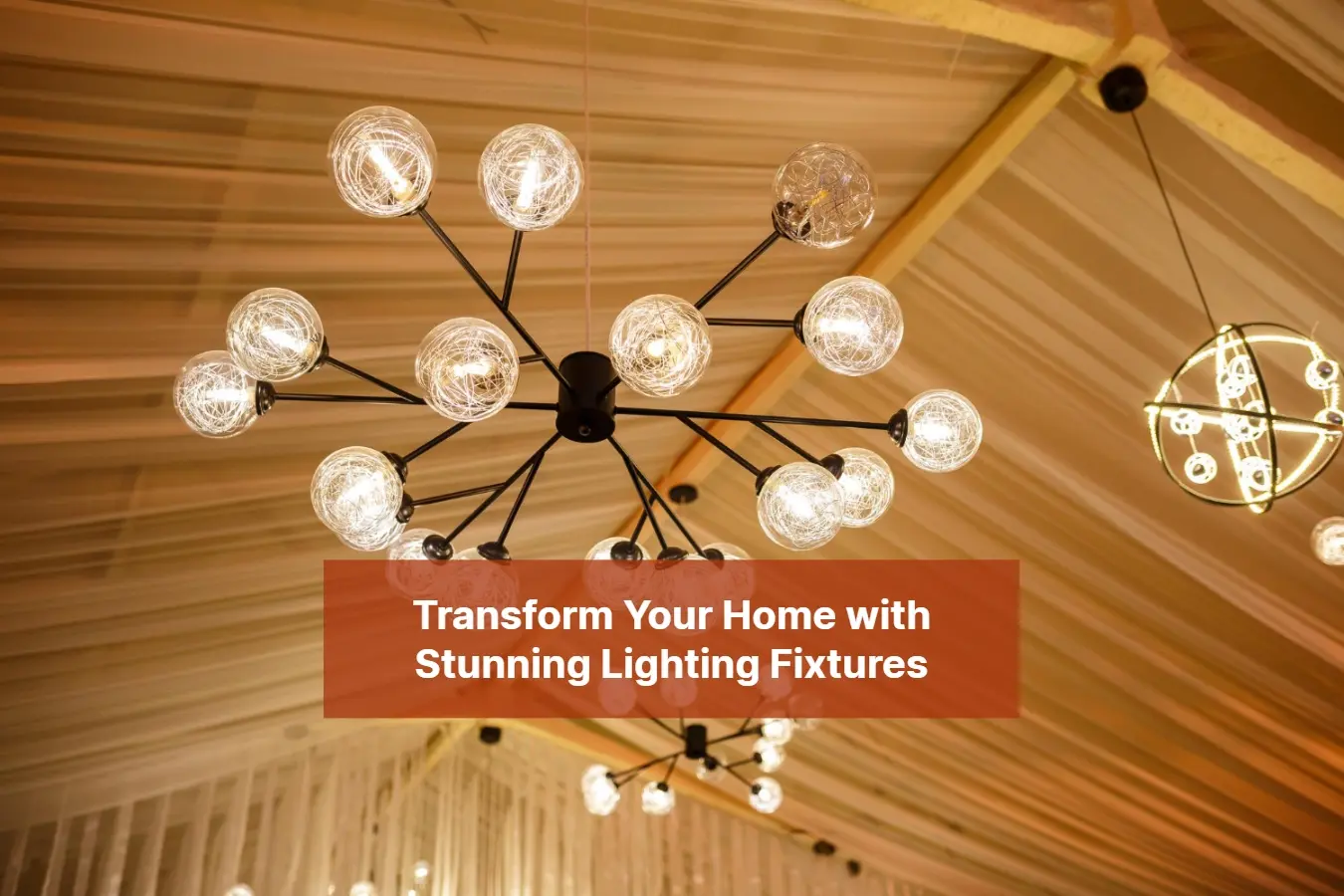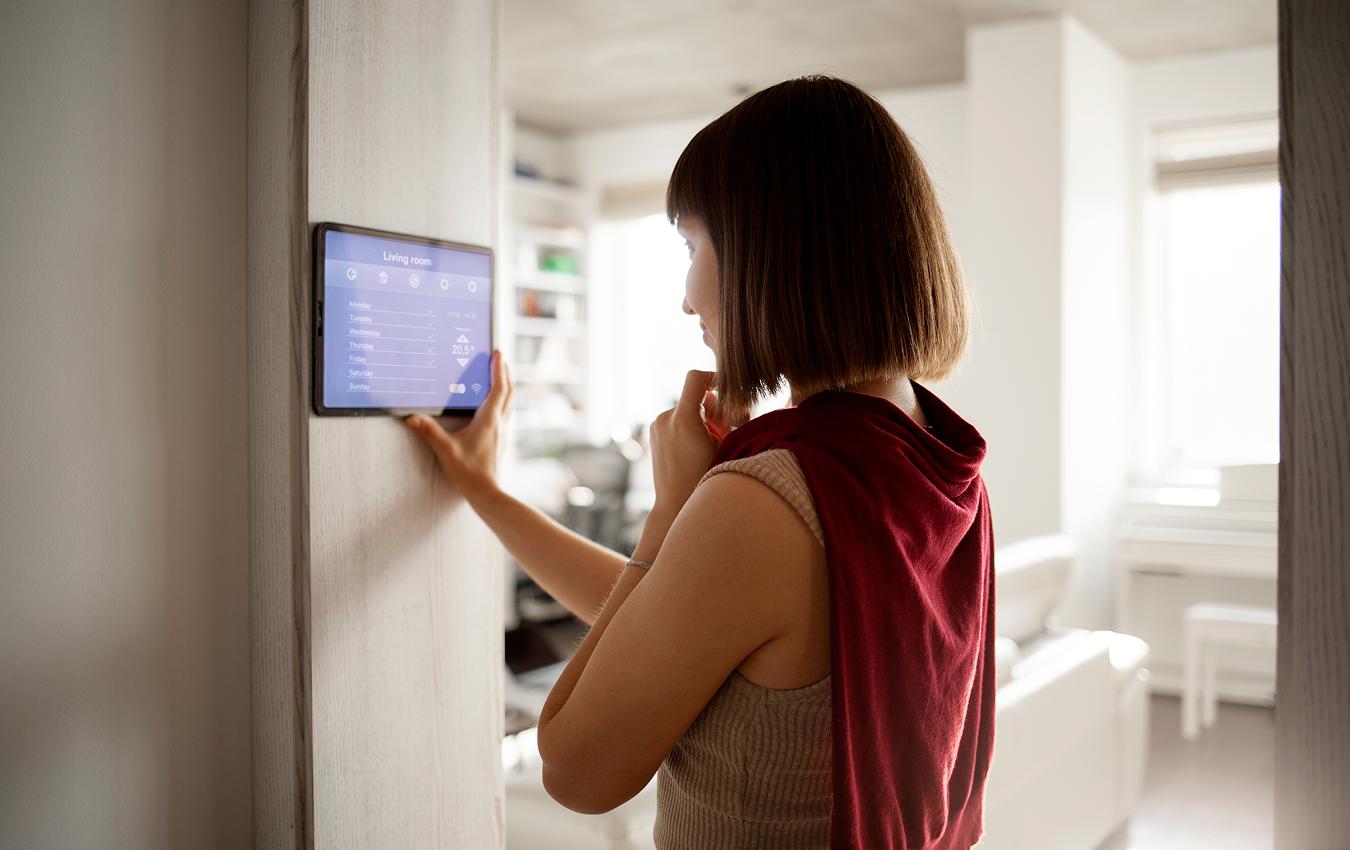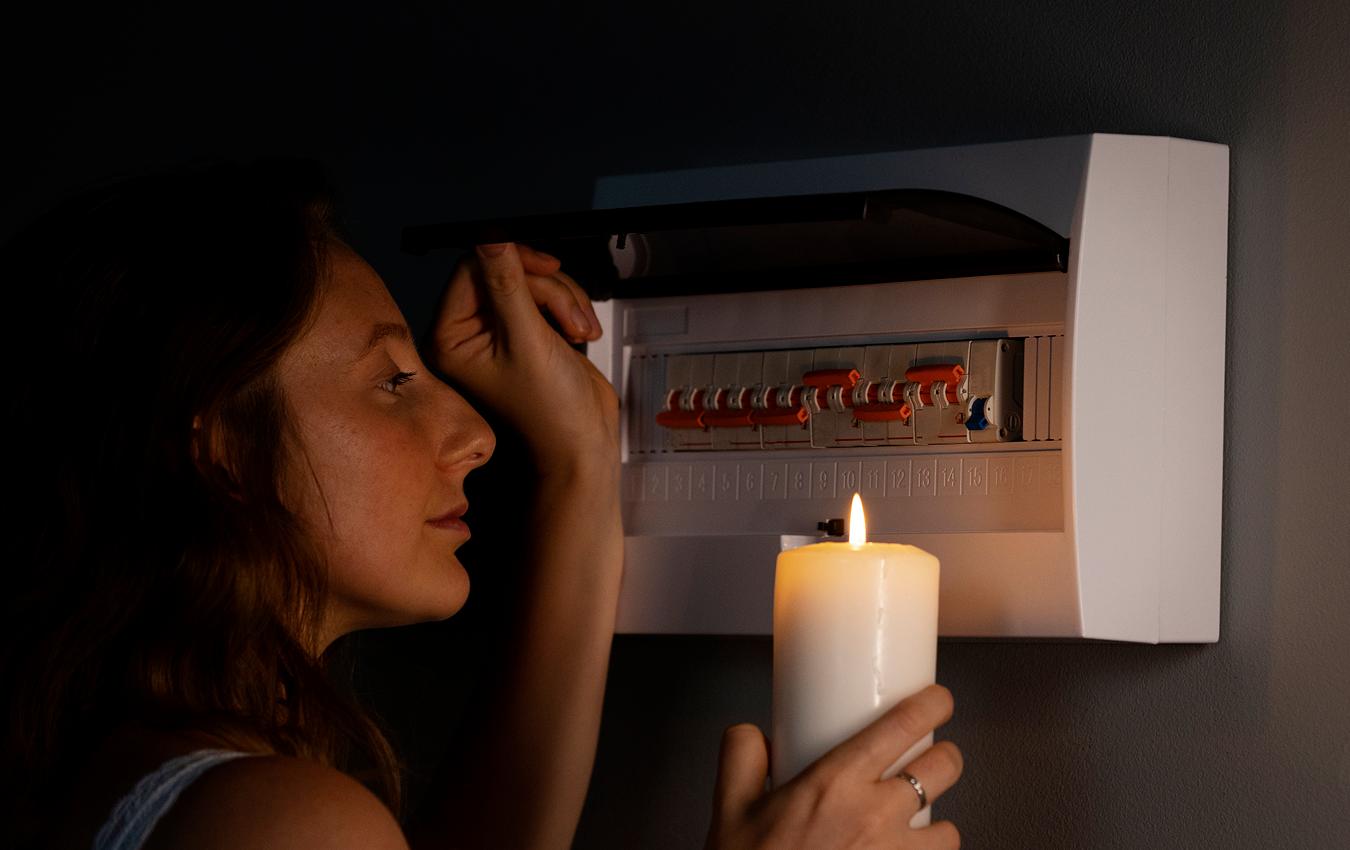Are you tired of your dull and outdated lighting fixtures? Do you dream of transforming your home into a stylish and inviting space? In this step-by-step installation guide, we will show you how to bring your interior to life with stunning lighting fixtures. From elegant chandeliers to sleek pendant lights, we will walk you through the entire process, ensuring that your home is the envy of your neighbors. Our expert tips and tricks will not only help you choose the perfect fixtures for each room, but also guide you through the installation process with ease. Whether you’re a seasoned DIY enthusiast or a beginner, our comprehensive guide will empower you to create a beautifully illuminated home. Get ready to say goodbye to lackluster lighting and hello to a truly transformative space!
Importance of Good Lighting in Home Decor
Lighting plays a crucial role in home decor. It has the power to completely transform the look and feel of a space, creating ambiance and enhancing the overall aesthetic. Good lighting can make a small room appear larger, highlight architectural features, and set the mood for different activities. On the other hand, poor lighting can make even the most well-designed room feel dull and uninviting. When it comes to creating a beautifully illuminated home, it’s important to understand the different types of lighting fixtures available and how they can be used to enhance your space.
Types of Lighting Fixtures
There are several types of lighting fixtures to choose from, each serving a specific purpose in home decor. Let’s explore some of the most popular options:
Chandeliers
Chandeliers are timeless lighting fixtures that add elegance and sophistication to any room. They come in a variety of styles, from traditional crystal designs to more modern and minimalist options. Chandeliers are typically used in dining rooms, foyers, and living rooms, but they can also make a statement in bedrooms and bathrooms. When choosing a chandelier, consider the size of the room, the height of the ceiling, and the overall style of your home.
Pendant Lights
Pendant lights are a versatile lighting option that can be used in various areas of the home. They are suspended from the ceiling by a single cord or chain, allowing them to hang freely. Pendant lights are often used in kitchens, dining areas, and above countertops or islands. They can also be used as task lighting in bedrooms and reading nooks. Pendant lights come in a wide range of styles, materials, and sizes, making it easy to find the perfect fixture for your space.
Wall Sconces
Wall sconces are a great way to add both ambient and accent lighting to a room. They are mounted on the wall and can be used to highlight artwork, architectural features, or create a soft and inviting glow. Wall sconces are commonly used in hallways, staircases, and bathrooms, but they can also be used in bedrooms and living rooms. When choosing wall sconces, consider the height of the wall, the size of the room, and the desired lighting effect.
Recessed Lighting
Recessed lighting, also known as can lights or pot lights, is a popular choice for modern and minimalist spaces. These fixtures are installed into the ceiling, creating a clean and seamless look. Recessed lighting is typically used for general or ambient lighting and can be used in any room of the house, including kitchens, living rooms, and bedrooms. When installing recessed lighting, consider the spacing between the fixtures, the height of the ceiling, and the desired lighting intensity.
A professional lighting installation will help you position your lighting fixtures correctly for optimal lighting and save money on your energy bill. Lighting fixtures inside or outside a home can be installed quickly and effectively by Premier Electrical Services. Call us right away at 954-900-1696 to place your online order for lighting installation.
Factors to Consider Before Choosing Lighting Fixtures
Before choosing the light fixtures for your home, there are several factors to consider, to ensure that you make the right choice. Let’s explore these factors in detail:
Room Size and Ceiling Height
The size of the room and the height of the ceiling are important considerations when choosing lighting fixtures. In small rooms, it’s best to opt for smaller fixtures that won’t overwhelm the space. On the other hand, larger rooms can accommodate bigger and more elaborate fixtures. Ceiling height also plays a role in fixture selection. For low ceilings, flush-mount or semi-flush-mount fixtures are ideal, while high ceilings can accommodate chandeliers or pendant lights.
Style and Aesthetic
Consider the overall style and aesthetic of your home when choosing lighting fixtures. The fixtures should complement the existing decor and enhance the overall design. For traditional or classic interiors, chandeliers, or wall sconces with ornate details may be the perfect choice. On the other hand, modern and minimalist interiors can benefit from sleek and simple fixtures. Consider the materials, finishes, and shapes that will best suit your style.
Lighting Needs and Functionality
Think about the lighting needs and functionality of each room before selecting fixtures. Different areas of the home require different types of lighting. For example, kitchens and bathrooms require bright and focused lighting for tasks, while bedrooms and living rooms benefit from softer and more ambient lighting. Consider the activities that will take place in each room and select fixtures that will provide the appropriate lighting.
Tools and Materials Needed for Installation
Now that you’ve chosen the perfect lighting fixtures for your home, it’s time to gather the necessary tools and materials for the installation process. Here are the essential items you’ll need:
Screwdriver Set
A set of screwdrivers with different sizes and types will be helpful for removing old fixtures and installing new ones. Make sure you have both flathead and Phillips-head screwdrivers.
Wire Strippers
Wire strippers are necessary for removing the insulation from electrical wires, allowing you to connect the fixtures properly. Choose a wire stripper that is suitable for the gauge of your wires.
Wire Nuts
Wire nuts are used to secure the connections between wires. They come in different sizes, so make sure you have a variety of options on hand.
Voltage Tester
A voltage tester is essential for ensuring that the power is turned off before working with electrical fixtures. This tool will help you avoid accidents and ensure your safety.
Ladder or Step Stool
Depending on the height of your ceilings, you may need a ladder or step stool to reach the fixtures. Make sure you have a stable and secure platform to work from.
Electric Drill
An electric drill will make the installation process much easier and faster. It will help you drill holes, secure screws, and make adjustments as needed.
Preparing the Space for Installation
Before you begin the installation process, it’s important to prepare the space to ensure a smooth and successful installation. Here are some steps to follow:
1. Turn off the power
Before working with electrical fixtures, turn off the power at the breaker box to avoid any accidents. Use a voltage tester to confirm that the power is indeed turned off.
2. Remove old fixtures
If you have existing fixtures, carefully remove them by unscrewing the mounting screws and disconnecting the wires. Take note of how the old fixtures were installed and make any necessary repairs or adjustments.
3. Patch any holes
If the new fixtures require different mounting holes, patch up the old holes using sparkling compound. Sand the patched areas smooth and repaint if necessary.
4. Measure and mark
Use a tape measure to determine the exact placement of the new fixtures. Mark the locations with a pencil or tape to ensure accurate installation.
Step-by-Step Installation Guide for Lighting Fixtures
Now that you’ve prepared the space, it’s time to install your new lighting fixtures. Follow these step-by-step instructions to ensure a successful installation:
1. Read the instructions
Start by reading the manufacturer’s instructions that come with the fixtures. Familiarize yourself with the installation process and any specific requirements or precautions.
2. Assemble the fixture
If your fixture requires assembly, follow the instructions to put it together. Make sure all the components are securely attached and in the correct position.
3. Connect the wires
Use wire nuts to connect the fixture’s wires to the corresponding wires in the electrical box. Match the colors (black to black, white to white, and green or copper to the ground).
4. Mount the fixture
Secure the fixture to the electrical box using the mounting screws provided. Make sure it is level and aligned properly.
5. Test the fixture
Turn the power back on and test the fixture to ensure it is working properly. If there are any issues, double-check the connections and troubleshoot as necessary.
6. Install bulbs and shades
Once the fixture is working correctly, install the bulbs and shades according to the manufacturer’s instructions. Make sure they are securely in place.
7. Clean up and enjoy
Clean up any debris or packaging materials from the installation. Step back and admire your beautifully illuminated space!
Safety Precautions During Installation
When working with electrical fixtures, it’s important to prioritize safety. Here are some safety precautions to keep in mind:
- Always turn off the power at the breaker box before working with electrical fixtures.
- Use a voltage tester to confirm that the power is turned off before touching any wires.
- Avoid working in wet conditions or with wet hands to prevent electrical shock.
- Use a stable and secure platform, such as a ladder or step stool, when working at heights.
- Wear appropriate safety gear, such as gloves and safety glasses, to protect yourself from accidents or injuries.
If you’re unsure about any part of the installation process, consult a professional electrician.
Troubleshooting Common Installation Issues
Sometimes, installation doesn’t go as smoothly as planned. Here are some common installation issues and how to troubleshoot them:
The Fixture doesn’t turn on
Check the connections between the fixture and the electrical box. Make sure the wires are securely connected and that the power is turned on. If the issue persists, consult a professional electrician.
Fixture flickering
Flickering can be caused by loose connections or incompatible bulbs. Double-check the connections and ensure that you’re using the correct types of bulbs for the fixture. If the problem continues, consult a professional.
Fixture is not level
If the fixture is not level, adjust the mounting screws or chain to ensure proper alignment. Use a level to guide you.
Dim lighting
Dim lighting can be caused by low-wattage bulbs or poor electrical connections. Check the wattage recommendations for the fixture and ensure that the connections are secure. If needed, replace the bulbs with higher-wattage options.
Final Touches and Maintenance Tips
Congratulations! You’ve successfully installed your new lighting fixtures. To add the finishing touches and ensure their longevity, consider the following tips:
Clean your fixtures regularly to remove dust and debris. Use a soft cloth or a duster to gently wipe the surfaces.
Replace bulbs as needed to maintain optimal lighting. Follow the manufacturer’s recommendations for bulb replacement.
Consider installing dimmer switches to control the intensity of your lighting. This allows you to create different moods and save energy.
Experiment with different types of bulbs to achieve the desired lighting effect. LED bulbs are energy-efficient and have a longer lifespan compared to traditional incandescent bulbs.
Keep an eye out for any signs of wear or damage. If you notice any issues, such as loose connections or cracked fixtures, address them promptly to avoid further problems.
Conclusion
Transforming your home with stunning lighting fixtures is an exciting and rewarding project. By understanding the importance of good lighting, exploring different types of fixtures, and following a step-by-step installation guide, you can create a beautifully illuminated space that reflects your personal style. Remember to prioritize safety during the installation process and seek professional help if needed. With the right tools, materials, and techniques, you’ll be able to say goodbye to lackluster lighting and hello to a truly transformative home. Let your creativity shine and enjoy the benefits of a well-lit and inviting space!
To reduce your energy costs and create a lovely ambiance at night, you can place your lighting points correctly with a professional lighting fixture installation. Lighting fixtures inside the home will be installed quickly and effectively by Premier Electrical Services. Call us at 954-900-1696 now and order your lighting installation online.
Check out the latest news:
- Commercial Energy Audit: Spotting the Sources of Energy Waste
- Protect Your Fort Lauderdale Home with Whole-House Surge Protection
- Power Outages in Fort Lauderdale: How to Protect Your Home
- Preparing for a Home Rewiring Project: A Checklist for Homeowners
- 5 Critical Signs You Need a Whole-House Surge Protector






